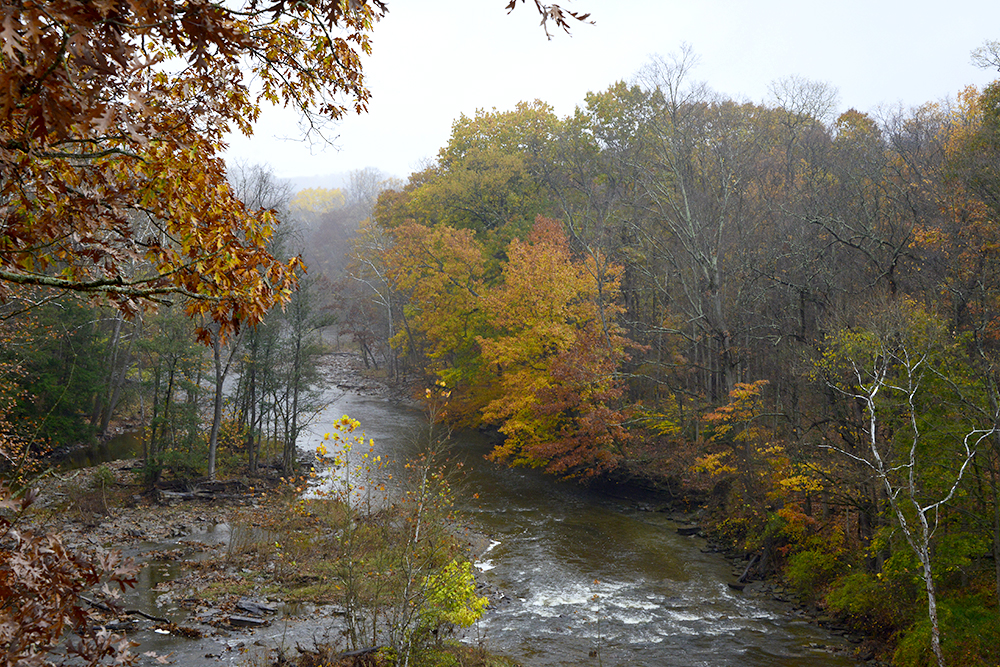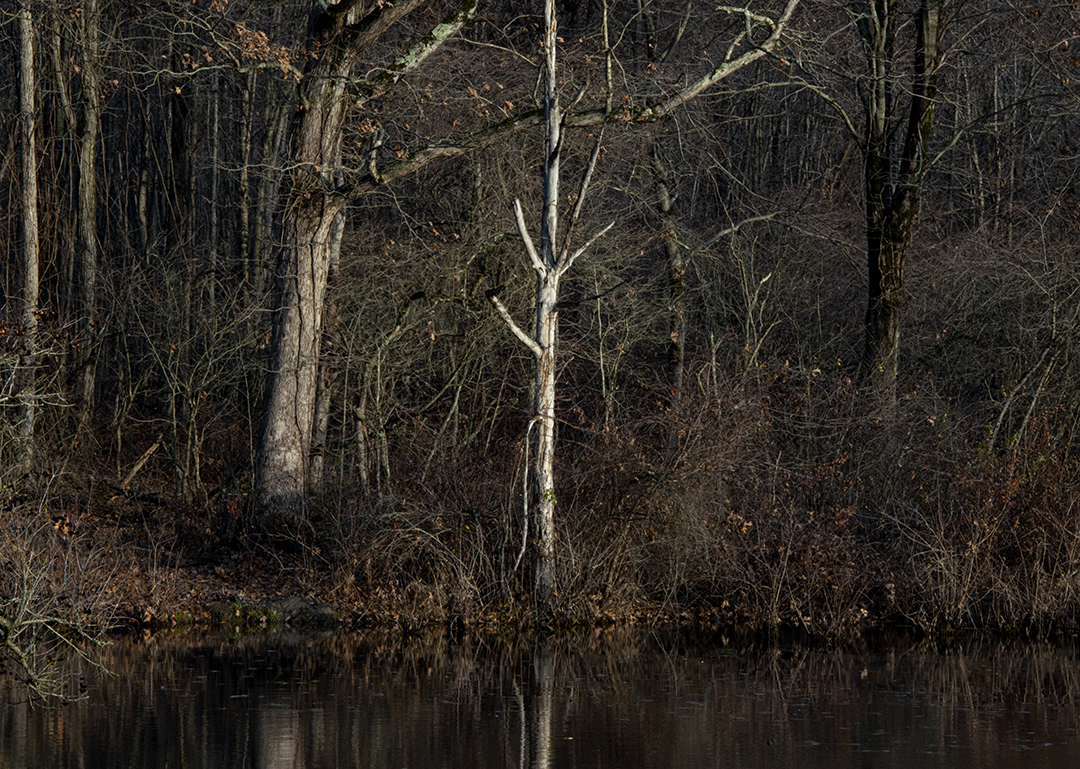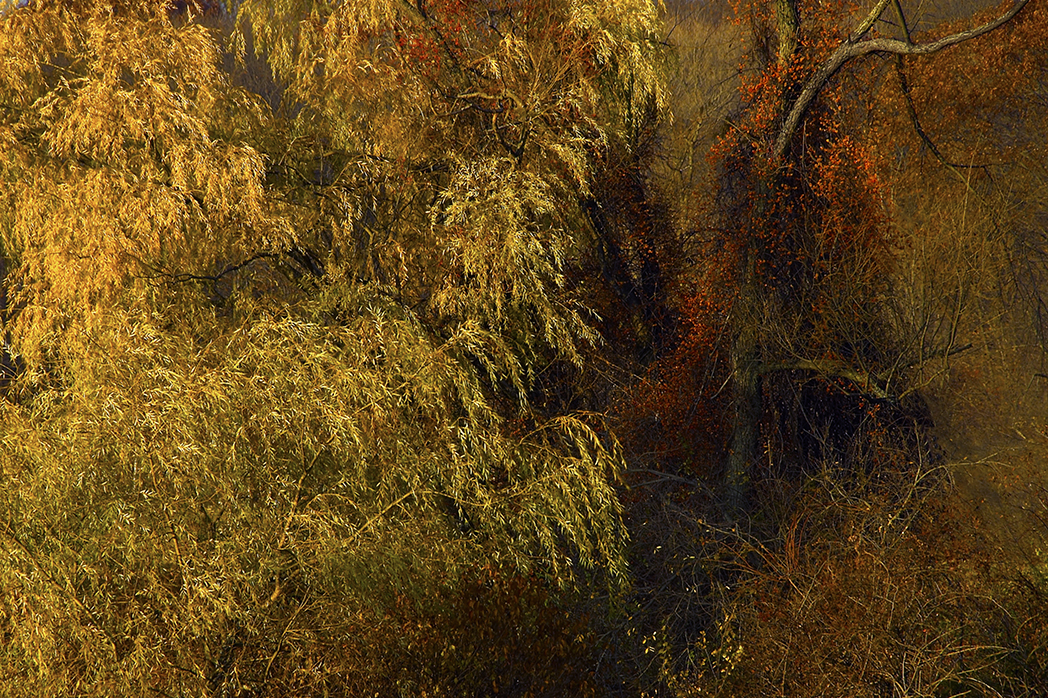
Splendor
I almost named this “In Praise of Restraint” (see below). This is an autumn scene I took Monday atop the Miles road bridge spanning the Chagrin river in Bentleyville. I was looking for a view that might illustrate this year’s extraordinary range of fall colors without resorting to computer enhanced, hyper-saturation, the increasingly popular artifice employed in post-processing, especially during this season. My own favorite time to photograph the leaves is shortly after or during a rain, when the colors are naturally saturated and the contrast is enhanced by the soft intensity of color against dark, almost black branches and tree trunks. In this image I actually had to desaturate colors somewhat, a concession to the value of “restraint”.
One of the very interesting elements from my vantage point above the river was the vast number of easily identifiable trees. I suspect this compressed photograph will make it difficult to discern specific leaves but northeast Ohioans will recognize many species by the tree’s overall shape and color. On my original full sized image file I found yellow maples, sugar maples, American sycamores, American cherry, beech, honey locust, ash, red and white oak, spruce, white pine and possibly hemlock. I’ve stood above Vermont’s amazing Quechee Gorge during the height of color and, apart from the altitude, would say our views compare very well.
The challenge for many new photographers is that iPhones and most consumer level cameras process and save image files in a jpeg format that by design and default over-saturate the image. Color amping landscapes is especially seductive in autumn because the “pop” is easy to create and addictive initially. Photoshop and similar post processing software provide filters and sliders that make it easy to pervert the color spectrum into luminescent neon with a click of a mouse. These garish colors seem to exist because they “can”, not because they are in any way faithful to the colors we experience. Notwithstanding the principle of artistic license, most serious photographers have a threshold for image manipulation, some committed to reproduce an image precisely as experienced, some comfortably adding or deleting information purposefully, and some simply resigned to gratuitous changes without regard for an aesthetic.
My own preference is not to rely on computer algorithms (i.e. computer engineers) to make those choices for me. Over saturating, adding too much contrast, etc. usually does not contribute to the power of a landscape. To the contrary, it introduces visual noise that detracts from an artist’s intent, especially his/her ability to communicate subtleties that may otherwise be lost. This is a consideration for all photographers that I’ll address with more specificity in a future post but it has become increasingly disconcerting in the last decade to see the profusion of photographs from iPhones and digital cameras posted on social media (Facebook, Instagram, Pinterest, etc.) that so distort the natural world. I would encourage photographers of all levels to consider photographic restraint when venturing into the farms, forests and fields. Many if not most cameras can be adjusted (see your manual) to save files in a raw or tiff format. Desaturation during post processing is also a good alternative through photo editing programs such as Photoshop, Capture One, Skylum Luminar, Adobe Elements or free basic editing programs offered by most camera manufacturers.







